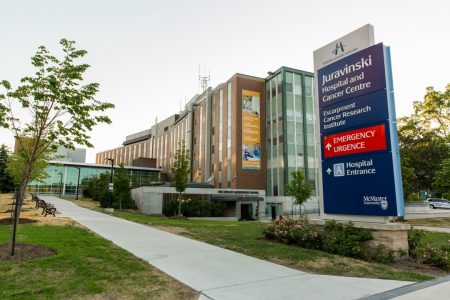How do we tell the story of a year like no other?
It was a testing ground for processes and partnerships. A stage for rapidly changing information. A roller coaster of emotion.
Each chapter had its own unique needs, challenges and accomplishments. And at every point in the journey, the expertise and leadership of the entire HHS family – paired with courage and compassion – got us through.
Drag the timeline or use the arrows to scroll through COVID-19 milestones. Then, view the next section using the numbers 1-4.
We salute our people for demonstrating resilience and heroism during an extraordinary time. Click on each photo to read their stories.
Virtual care services for patients of HHS – including medical appointments by phone or video conferencing – have skyrocketed by 1,500 per cent since the start of the pandemic. Other forms of virtual care, which were already increasing even before the pandemic, include at-home monitoring. Patients receive monitoring devices to bring home following hospital stays or surgery and are followed remotely by healthcare providers.
Here are some examples of achievements in virtual care made by HHS during the past year:

The best patient care in the future will require new processes, equipment and partnerships to keep up with new technology, changing demographics and increasing patient expectations.
We have stayed the course on investments that will ensure Hamilton Health Sciences remains a high-performing hospital that delivers exceptional and safe care to the patients we serve.

























